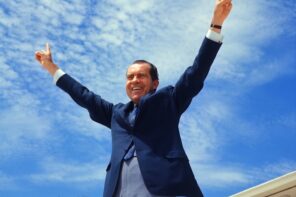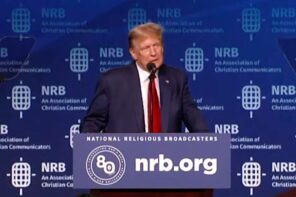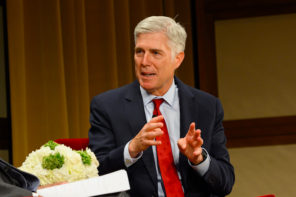It’s been called the longest revolution, a social battle “fought and won with words,” one of the “great and substantial democratic movements,” and the living revolution of everyday life, here and now. This revolution is the women’s movement, the struggle for full equality, rights, and freedoms for women and all peoples.
This Friday, August 26, is Women’s Equality Day, instituted by Congress in 1971 at the behest of Bella Abzug, one year after women set out in a nationwide strike for equality (“Don’t Iron While the Strike is Hot”) to mark 50 years since ratifying the 19th Amendment.
What they protested was the continued lack of women’s rights fifty years after gaining the vote. By extension, this year Women’s Equality Day marks the seventy-two year campaign (launched 163 years ago on July 19-20th, 1848) at what is regarded by many in the U.S. as one of the earliest conventions calling for discussion of “the Social, Civil, and Religious Condition of Woman,” held in the Wesleyan Chapel of Seneca Falls, NY.
The day also calls to attention 88 years of seeking the Equal Rights Amendment, first introduced by Alice Paul as the Lucretia Mott Amendment in July 1923, on both the 75th anniversary of the Declaration of Sentiments and the third anniversary of the 1920 victory for national suffrage on the steps of yet another Seneca Falls church: the First Presbyterian Church.
Fill In the Blanks
Equality is a project long in the making. While change is usually measured in numbers (female members of Congress, the value of a woman’s dollar), the long view of intellectual and political history matters even more. Taking the long view means putting history to work and to minding the gaps; the blank spaces in popular knowledge and analysis.
Coline Jenkins, great-great granddaughter of Elizabeth Cady Stanton, is one activist gap-minder. She will speak on Equality Day in Johnstown, NY, the birthplace of Elizabeth Cady Stanton. And, she spoke just weeks ago at the anniversary celebration of the Declaration of Sentiments, recalling her time as a teen visiting her grandmother who had “all the original major works of Elizabeth Cady Stanton in her attic—The Declaration of Sentiments, The Woman’s Bible.”
It was only years later, she said, that it dawned on her that she had been but “two floors away from all that history” and did not really know anything about it. She further reflected on how, as a girl staying at a campground near Seneca Falls, she had gone to a laundromat that, as it turned out, was formerly the site of the Wesleyan Chapel: the site of the “largest bestowal of democratic freedoms in the U.S.” Could one imagine, she asked, “a laundromat in Independence Hall?”
Jenkins’ point is an incisive one. It is not simply whether we tell tales of the history of the women’s movement, but rather how we turn that history to the here and now. Martha Kelly notes a similar “present absence” in what she calls neglected Americana:
Relics of revolutions are avidly collected—uniforms, bullets, swords, guns, and propaganda are carefully preserved. Until recently, however, relics of one of the most sweeping revolutions, the social revolution in women’s rights that culminated in the suffrage struggles of the early twentieth century, gathered dust or were discarded.
Victoria Bekiempis echoes this critique in an article on the old boys club that is the New Atheism—thanks to a very old-boyish mainstream media coverage. We hear a lot about Dawkins and Hitchens, but not about freethinkers like Jennifer Michael Hecht or Susan Jacoby. In their work, both Hecht and Jacoby take note of Elizabeth Cady Stanton’s unconventional religious views, and of the productive space of “doubt” in social movements. Jacoby notes further of the tendency today to “downplay secularist leanings” among pro-choice groups, highlighting instead liberal ministers and rabbis. This “timidity,” she writes, contrasts sharply with the “boldness” of nineteenth-century freethinkers.
Stanton indeed wrote and lived bold, submitting before her audience the facts of a “candid world” in sixteen grievances—two of which directly address the church and (mis)interpretation of scriptures. Reacting to church opposition to the many causes that she championed, Stanton once wrote, “No reform has ever been started but the Bible, falsely interpreted, has opposed it.”
Stanton’s The Woman’s Bible was a bestseller. Undertaken initially as a commission of academic and church women to revisit those parts of the Bible where women were either omitted or presented in troubling ways, Stanton sought:
a radical liberating theology that stressed self-development and challenged the ideological basis for women’s subordination. Until her death in 1902, Stanton continued to write on religious themes and to condemn canon law for restricting women’s freedom and retarding their progress.
But these histories offer only dim illumination on current issues and dividing lines, so dim one almost gets the sense that these markers in the longer march to women’s equality might belong to another galaxy entirely. There is, as I’ve suggested, a kind of “present absence” of feminist voices, review and analysis. There are, of course, plenty of feminist scholars, politicians, economist,s and religious thinkers; so many, in fact, that one could fill entire panels and news programs regularly with a range of women and political feminist views.
One has to ask—especially in the face of current debate on candidates for the presidency—if this present absence works to contract and constrict how we use the history of the women’s movement and feminism to illuminate American troubles today, to recall the longer battle lines drawn amongst women’s organizations on opposing religious and political lines. This absence of feminist thought and contributions is equally evident in debate between science and religion on spiritual experiences, or the neuropsychology of religious experience.
Rarely, in these discussions, does one find feminist studies of science or religion. Indeed, the histories of this scholarship are treated as separate and anything but equal.
Moving Time Backward?
At the 163rd anniversary of the women’s rights convention in Seneca Falls, Congressional Representatives Richard Hanna (R-NY) and Carolyn Maloney (D-NY) each addressed current brakes on justice and equality across race, sex, and sexuality. As Hanna noted, histories are woven and rewoven to open us to larger understandings of values and principles of a nation, of its history as one organized by movements for civil rights. The audience is reminded: The place of Seneca Falls and the significance of 1848 to this larger history of freedoms is to declare and declare ourselves again to advocacy, not to joining congress in what appears to be an effort, in Hanna’s words, to “move time backward” when it comes to women’s rights, reproductive rights and freedoms, race, and sexual equality.
This history and these events bring the place of churches in civil rights history into sharp relief. Both the Wesleyan Chapel’s and the First Presbyterian Church’s histories were built on struggles for rights and freedoms; indeed, the First Presbyterian Church proudly announces itself as the site where Alice Paul first introduced an equal rights amendment, welcoming “all God’s people. The color of your skin, age, sexual orientation, economic class, or educational background does not matter to us. We understand that we are all children of God and God has blessed each of us with spiritual gifts.”
That two religious institutions within minutes of one another see in their foundational histories the larger story of civil rights serves as a kind of aide-mémoire to both government and more general debate on relations between state and church on rights, equality, and freedom. What Hanna deemed congressional efforts to turn back the clock, Maloney made more concrete in those day-to-day losses women experience in business, law, economics, politics, medicine, gender pay differentials, and, one might well add, religion and academics (including offices of administration).
Her point was that progress has ground to a near halt. Women hold less than 18% of the seats in Congress and 25% in the state legislature; women compose less than 3% of the heads of Fortune 1000 companies, 16% of the members of the Boards of Directors of Fortune 500 companies; and, 15% of top executives and 8% of top earners. Few women make partner at top law firms and a “vanishingly small number of law firms have women as managing partners”; among new physicians, “women earned almost $17,000 a year less than their male counterparts”; and, “shockingly… the pay gap between men and women increased almost fivefold during the ten year period from 1999-2008.” Not to mention the stunning point historian Judith Bennett has made of how the medieval woman worker’s wages, while “certainly not [woman’s] modern counterpart,” “nevertheless haunt our modern ones: 71 per cent in 1363… 75 percent in 2002.”
This reminds us of the paradoxical position of feminist and women’s history: One wants to track a story of progress in the modern era even as a longer feminist lens may sharpen this narrative in ways that prompt us to think through the wage gap and other inequalities as ideology. It also makes instructive Maloney’s urging to enact the E.R.A. now because Constitutional amendments may prove more durable than changes in law, as she evidences with the recent Wal-Mart and Ledbetter cases.
Rep. Maloney underscored her point with a recent statement from Justice Scalia: “Certainly the Constitution does not require discrimination on the basis of sex. The only issue is whether it prohibits it. It doesn’t.” Equality needs to be embodied in the Constitution; the Declaration of Sentiments as the E.R.A. each launched their own salvos in the struggle for equality, rights and justice. The revolution is not over, nor is religion’s role in it.
Consider the New York Times’ 2008 full-page article on race and gender, comparing the Stanton and Douglass debate to the Clinton and Obama run for president. Not a word was mentioned on religion or the place of religion in either of these historic civil rights struggles—a surprising omission given how these same candidates (and the nation) invoked religion when they did not want to reveal their support, or lack thereof, on issues such as gay and lesbian rights (including marriage).
Today, with another presidential election on the horizon, glaring omissions appear as well in critical debate and commentary on (religious) women in politics—such as that on Sarah Palin and Michele Bachmann.
As one follows the path running alongside the water wall in Seneca Falls on which is inscribed the Declaration of Sentiments, one passes two blank slates before the Declaration and two after the list of signatories, open spaces, ones for the “matrix of the imagination” to inscribe the next chapter of women’s history writ large, a history that rolls down like justice and equality.




